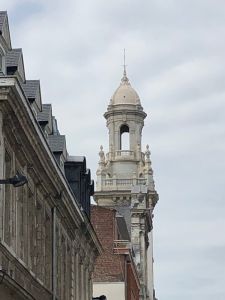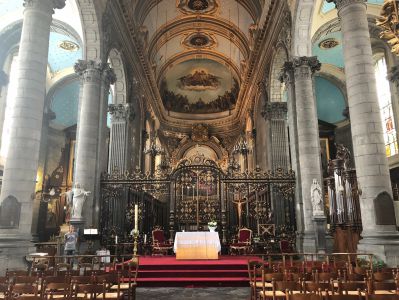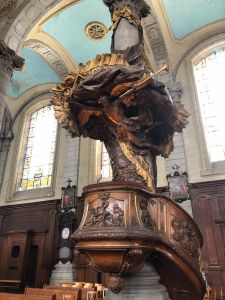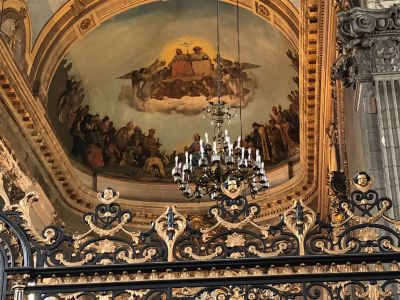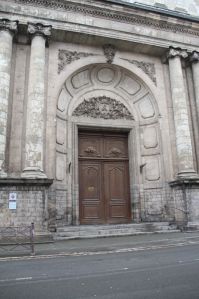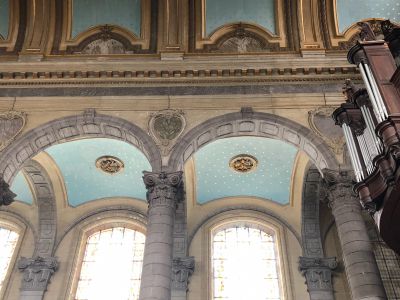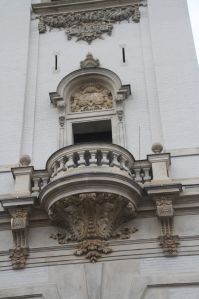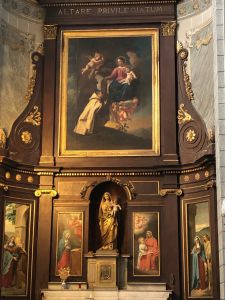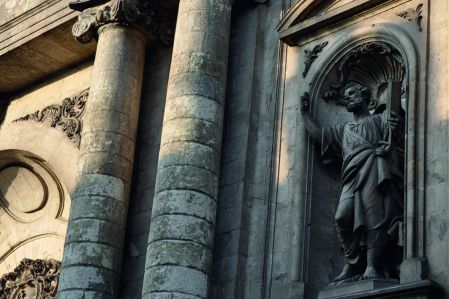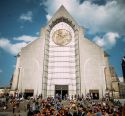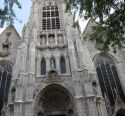Church | XVIII-XIX | Baroque | Catholic Church




Map
Opening hours
01 January - 31 December
Mon -
Tue -
Wed -
Thu -
Fri -
Sat 13.30 - 17.30
Sun -
08 July - 03 September
Mon -
Tue -
Wed 13.30 - 17.30
Thu 13.30 - 17.30
Fri 13.30 - 17.30
Sat 13.30 - 17.30
Sun -
School holidays
Wednesday to Saturday : 1.30 pm - 5.30 pm (except 25/12 and 01/01)
Guided tour
Religious offices
Description
Originally the building, built in the 17th century was a chapel, that of the Unshod Carmelites who had recently arrived in Lille. The work started in 1701 and the architect is Thomas-Joseph Gombert. The work, interrupted by the siege of Lille and the Succession Wars of Spain, continued under the direction of the nephew of the original architect, François-Joseph Gombert. The chapel was inaugurated in 1758 and is a remarkable example of the Jesuit style. This is an artistic movement born of the Counter-Reform, close to the baroque style and considered art as a missionary force serving the faith.
When the old parish church of St. Andrew , against the ramparts , was destroyed in 1784, the chapel became the new parish church in which such important French people as the Cardinal Lienart, General Faidherbe and Charles de Gaulle whose birthplace is nearby, were baptised.
The church entrance is framed by two majestic carved representations of St. Peter and St. Paul. The church has three naves and no transept. Its interior decor is of unbelievable richness, because some of the elements come from other religious buildings in the town, whose furnishings were dispersed at the French Revolution. Numerous 17th and 18th century works can be admired, such as the extraordinary pulpit.
The church of St. Andrew was classified as a Historical Monument in 1949.
Photos
Remarkable elements
Pulpit
The pulpit, or preaching chair, is where the priest stood to deliver his sermon. Its elevated position allowed him to be seen by all and, above all, heard, thanks to the sounding board that amplified the preacher's voice.
This pulpit, dating from 1768, is a remarkable work of carved oak. It features a bas-relief decoration by regional artist Jean-Baptiste Danezan. At the top of the sounding board, the angel of Truth lifts the veil, revealing the theological virtues represented on the pulpit: Faith, Hope and Charity.
Choir screens
In the past, the choir was separated from the nave to distinguish the clergy from the congregation. Here, a wrought iron and cast iron screen, installed in 1844, marks the boundary of the sanctuary. Richly decorated, it replaces the old screen, which was destroyed during the French Revolution.
Paintings by Otto Venius
At the entrance to the church, two precious paintings catch the eye. They are the work of the Flemish painter Otto Venius (1556-1629), Rubens' master, and date from 1624.
These scenes, The Adoration of the Magi and The Presentation in the Temple, come from an old altarpiece that has now been dismantled.
The Martyrdom of Saint Andrew by Guillaume Descamps
The altarpiece in the choir is by the Lille painter Guillaume Descamps (1779-1858), a member of the Academy. His painting, The Martyrdom of Saint Andrew, was donated in 1822 by the governor of the city on behalf of King Louis XVIII.
Organ case
The organ case, dating from 1844, comes from Loos Abbey. The instrument it houses, comprising 36 stops, is the work of the Marklin-Schütze factory, which also built the choir organ.
Busts of the apostles Peter and Paul by Artus Quellin
These two marble busts, representing Saint Peter and Saint Paul, are signed by the Flemish artist Artus Quellin the Younger (1625-1700). They come from the former Saint-Pierre collegiate church in Lille, which was destroyed during the French Revolution.
Paintings by Jacques Van Oost, known as the Younger
The Bruges painter Jacques Van Oost the Younger (1639-1713), who lived in Lille for many years, left behind numerous religious works emblematic of the Counter-Reformation. Two of his paintings can be seen here:
The Infant Jesus Receiving the Instruments of the Passion, painted for the Capuchin Chapel in Lille;
The Virgin Mary giving the scapular to Saint Simon Stock, an oil on canvas painting that recalls the origins of the site, formerly the chapel of the Discalced Carmelites.
Translated with DeepL.com (free version)
Nearby
Circuit
In the footsteps of Natalie Doignies

The founder of a religious congregation dedicated to helping the poor out of poverty, she left her mark on the religious buildings of Lille...



